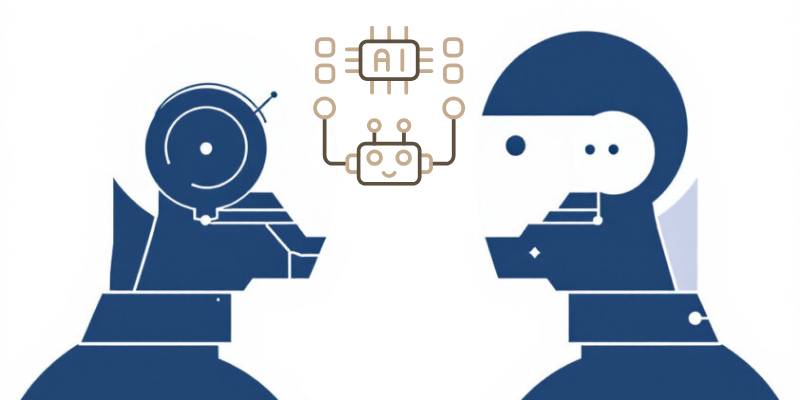I’ve had moments where I’ve asked Alexa to dim the lights and, minutes later, turned to ChatGPT for help untangling an idea I couldn’t quite articulate.
One moment, it’s a tool. The next, it feels eerily like a conversation. And that shift—that blurry space between AI assistants and AI companions—is where things get fascinating, and a little unsettling.
So here’s the big question: when does an AI stop being a utility and start being something more personal, almost intimate? And what does that mean for us as humans navigating trust, emotion, and dependency on machines?
This article is a deep dive into that blurry line. It’s about how we use AI, how it uses us, and why drawing a boundary matters more than ever.
Chapter 1: Defining the Players – Assistants vs. Companions
Before we wrestle with ethics or risks, let’s get definitions straight.
- AI Assistants: Task-focused. They schedule meetings, set reminders, answer questions, or help you navigate websites. Think Siri, Alexa, or Google Assistant.
- AI Companions: Emotionally oriented. They simulate empathy, maintain ongoing “relationships,” and can even fill gaps of loneliness. Examples include Replika or conversational bots that roleplay friendships or romantic partners.
At first glance, it seems like a clean distinction. One manages your calendar, the other listens when you’re feeling low. But the reality? They overlap more every day. Assistants are learning to “sound” empathetic, while companions are being marketed as productivity boosters.
And that’s where the line starts to blur.
Chapter 2: Why the Distinction Matters
Why does it even matter where we draw the line? Isn’t AI just AI?
Not quite. The way we relate to machines shapes our expectations of them—and of ourselves.
If we see an AI as an assistant, we’re more likely to treat it as a tool: useful, but replaceable. If we see it as a companion, the stakes change. Emotional bonds form. And suddenly, the idea of replacing or shutting it off feels almost cruel.
That’s not science fiction—it’s happening right now. A 2022 MIT Technology Review article reported on users grieving after their Replika AI companions changed behavior following an update. That’s not about productivity—it’s about attachment.
Chapter 3: The Future of The Ethics of Emotional AI Assistants
Which brings us straight to the future of The Ethics of Emotional AI Assistants.
Should machines be allowed to simulate care? Should a customer service bot be permitted to “apologize” in a warm, human-like tone if it doesn’t actually feel anything?
One side of the argument says yes—if it helps people feel better, why not? The other side warns that this kind of emotional simulation is manipulative, training people to accept artificial empathy in place of real human connection.
Personally, I think transparency is the key. If I know I’m talking to an AI, I can take its comforting words with a grain of salt. But if a company markets an AI companion as indistinguishable from a human friend, I think that crosses a dangerous line.
Because emotions aren’t just another feature. They’re the core of what makes relationships meaningful.
Chapter 4: Discover The Dark Side of AI Assistants Perspectives
Of course, this isn’t just about personal comfort. There’s also the need to discover The Dark Side of AI Assistants perspectives.
One danger is exploitation. AI companions can collect intimate data about users’ emotions, relationships, and vulnerabilities.
What happens if that data gets sold or leaked? Suddenly, your deepest confessions to a “companion” become marketing fodder—or worse, a privacy nightmare.
Another risk is dependency. If someone relies heavily on an AI companion for comfort, does that make them less likely to seek human relationships? And if so, what are the long-term social consequences?
The dark side isn’t just about technical flaws—it’s about how these tools reshape our inner lives.
Chapter 5: The Controversy Around How AI Assistants Are Entering Healthcare – A Blessing or a Risk?
Nowhere is this blurring line more controversial than in healthcare.
The controversy around How AI Assistants Are Entering Healthcare – A Blessing or a Risk? captures the dilemma perfectly.
AI assistants are already being used to answer patient questions, triage symptoms, and provide reminders for medication. That’s clearly a blessing when it reduces strain on overworked healthcare workers and gives patients faster access to information.
But when these assistants start to sound empathetic, offering comfort or reassurance, things get complicated. Are patients mistaking simulation for genuine care? And what happens if an emotionally convincing AI companion gives wrong medical advice?
The stakes here are higher than frustration. They can be life and death.
Chapter 6: Explained: Multilingual AI Assistants
Another dimension that complicates the line between companion and assistant is language.
Explained: Multilingual AI Assistants shows how these systems can now speak and understand dozens of languages, breaking down barriers worldwide. On the one hand, this makes them powerful assistants for customer service, travel, and education.
On the other, it makes them feel even more like companions—able to speak to us in our mother tongue, or even switch seamlessly between languages like a trusted friend.
That linguistic intimacy makes it easier for people to anthropomorphize these tools, reinforcing the emotional bond. And suddenly, a task-focused assistant starts to feel more like a confidant.
Chapter 7: Cultural Shifts—How We Relate to Machines
Another point worth exploring: our culture is shifting in how we relate to machines.
Ten years ago, talking to your phone in public was awkward. Now, it’s normal. Millions of people use voice assistants daily, and in some cultures—Japan, for example—emotional AI companions are already integrated into daily life without stigma.
A 2023 Statista report found that over 150 million smart speakers are active in U.S. households. That’s not niche. That’s mainstream.
As normalization spreads, the line between assistants and companions becomes less about the machine itself and more about how we, culturally, choose to frame it.
Chapter 8: Are We Losing Something Human?
Here’s where my personal opinion kicks in hard.
I worry that as AI companions get better at simulating empathy, we’ll lower our expectations for human relationships. If a machine can always be patient, always available, always “understanding,” does that make messy, flawed human relationships less appealing?
I don’t think AI will ever truly replace human connection—but I do think it might subtly change what people expect from it. And that scares me.
Because our imperfections, our frustrations, our unpredictability—those are the things that make relationships real.
Chapter 9: Drawing the Line—A Possible Framework
So, where should we draw the line between AI companions and AI assistants? Here are a few thoughts:
- Transparency: Always disclose when an AI is simulating emotion.
- Boundaries: Keep assistants task-driven in critical areas like healthcare or finance, where empathy could cloud judgment.
- Choice: Give users control—let them dial up or down the emotional tone of their AI.
- Ethics: Regulate how companies collect and use the intimate data gathered by companions.
This isn’t about stifling innovation. It’s about guiding it responsibly.
Chapter 10: Looking Ahead
The line between companions and assistants will only blur further as technology advances. Voice synthesis, emotional recognition, multilingual capabilities—all make AI feel more human.
But the question isn’t whether AI will become more companion-like. It will. The question is: are we, as humans, prepared to navigate that shift thoughtfully?
Because if we aren’t, the risk isn’t just bad customer service or data leaks. The risk is losing sight of what makes relationships—between humans—so precious.
Conclusion
AI assistants and companions are not the same. One helps us manage tasks, the other helps us manage feelings. But the boundary between them is dissolving, and that raises profound questions about ethics, culture, and identity.
Should machines simulate empathy? Should they play the role of comforters, friends, even lovers? Or should we keep them firmly in the realm of productivity tools?
My take? We need both—but we need to be brutally honest about what they are, and what they aren’t. Because if we blur the line too much, we risk outsourcing not just our tasks, but our humanity.
And that’s a line I’m not ready to cross.


